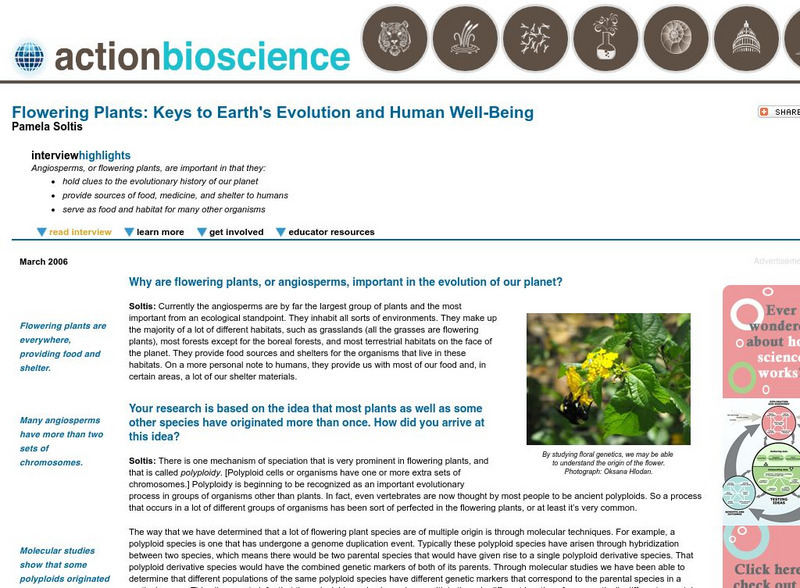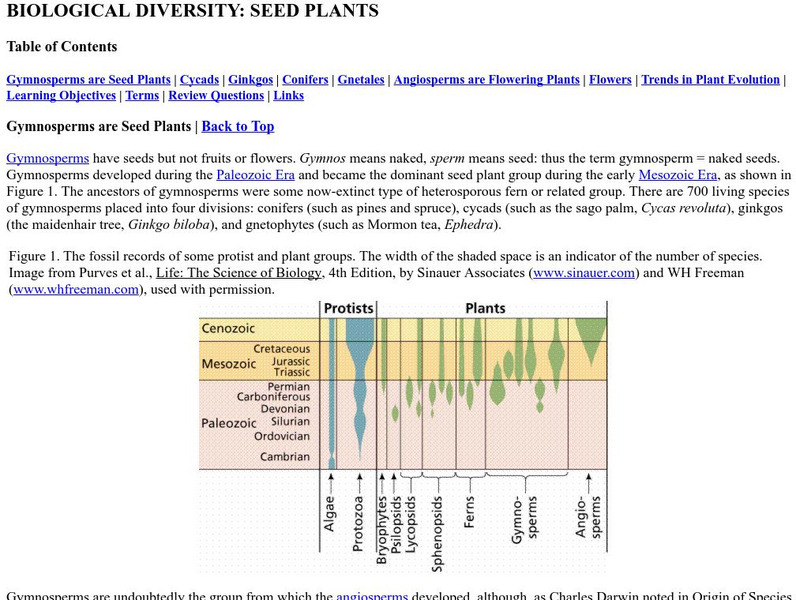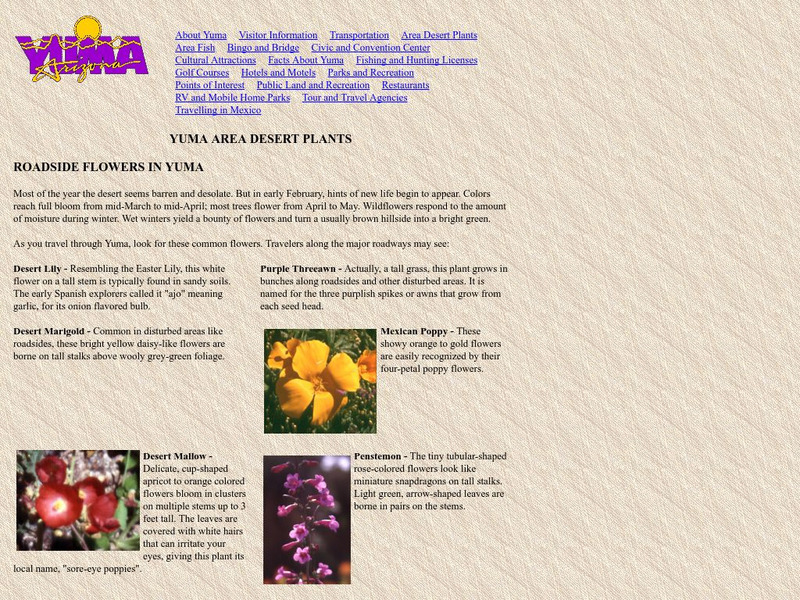Biology Pages
Kimball's Biology Pages: Sexual Reproduction in Angiosperms (Flowering Plants)
This site, from retired Harvard professor John W. Kimball, provides a detailed but understandable explanation of sexual reproduction in flowering plants. Includes informative, well labelled illustrations.
Ducksters
Ducksters: Biology for Kids: Flowering Plants
Kids learn about flowering plants in the science of biology including their life-cycle, structures of a flower, fruit, seeds, and pollination.
San Diego Zoo Global
San Diego Zoo: Flowers
Certain plants are known for their eye-catching blooms. Think of roses, orchids, carnations, and tulips. We often refer to these plants as "flowers." A flower, though, is just one part and quite an important part of a plant. Not all...
American Institute of Biological Sciences
Action Bioscience: Flowering Plants: Keys to Evolution & Human Well Being
Plants give us insight into the past, sustain the present, and prepare for the future. Peruse the article to appreciate the value of angiosperms.
Science Buddies
Science Buddies: Reveal the Red: Exploring the Chemistry of Red Flower Pigments
Are all reds the same? Find out in this science fair project. Investigate if the pigments in one type of red flower are different from those in another type of red flower. Flowers contain an assortment of amazing chemicals that produce...
Michigan State University
Michigan State University: Botany Online: Features of Flowering Plants: Flowers
Site details the parts of the flower as well as provides links to terms such as seed, calyx, corolla and many more.
Science and Mathematics Initiative for Learning Enhancement (SMILE)
Smile: Investigating the Structure of the Flower
This lesson plan has students make a model of a flower's structure using clay, toothpicks, and construction paper.
Science Bob Pflugfelder
Science Bob: Add Color to Flowers Using Science
Use this experiment to discover how to make colored flowers using common supplies with details on why it works.
Estrella Mountain Community College
Online Biology Book: Biological Diversity: Seed Plants
An in-depth reference explaining the role of seed plants in biological diversity. Photographs and labeled diagrams help learners with understanding.
Other
Staten Island Children's Museum: Garden Terrace: All About Plants and Seeds [Pdf]
Use this guide and some everyday materials to learn about plants and start your own garden.
Other
Bureau of Land Management: Yuma Area Desert Plants
Graphics and descriptions of the desert lily, desert marigold, desert mallow, purple threewa, Mexican poppy, trees and shrubs in the Yum, Arizona region.
Estrella Mountain Community College
Estrella Mountain Community College: Plants and Their Structure Ii
Explore information about the structure of the plant with this page. Investigate the difference between monocots and dicots by comparing both descriptions and pictures. Also understand what produces secondary growth. Finally, look at the...
Other
Zilker Botanical Gardens
This site provides information on the Zilker Botanical Gardens located in Austin, Texas. If you click on "Main Features, there will be descriptions of all the small gardens within the large garden. You can also check out pictures of the...
University of Hamburg
University of Hamburg: Photoperiodism and Stimulation
A good summary of the photoperiodic effects of plants. Discussion of the way that the length of the day effects the growth of plants.
BiologyWise
Biology Wise: Monocot vs. Dicot
One way plants have been classified has been based on the number of cotyledons in the seeds. The differences between monocots and dicots are listed along with some helpful facts.
Other
Catch the Science Bug: Plant Observation Investigation [Pdf]
Write down your observations about the different types of plants or flowers you see in their natural habit then record them on the data collection sheet.
Other
Kansas Wildflower and Grasses
A list of Kansas Wildflowers and Grasses. Includes photos and information.
Other
Galleria Carnivora
Leave your jackets in the Coat Check Room and then feel free to traipse through the Galleria Carnivora. Use this site to learn all you ever wanted to know about carnivorous plants.
NASA
Nasa: Climate Kids: Make Exploding Seed Balls!
Try this fun recipe for making and growing wildflowers right in your own garden.
BiologyWise
Biology Wise: Characteristics of Angiosperms
Discusses the evolution of angiosperms and describes the distinct features of angiosperms.
BiologyWise
Biology Wise: Angiosperms and Gymnosperms
Explains the similarities and differences between angiosperms and gymnosperms and provides examples of each.
Other popular searches
- Non Flowering Plants
- Flowering Plant Life Cycle
- Flowering Plants Label
- Flowering Plants Life Cycle
- Flowering Plants Labeling
- Flowering Plants Root
- Flowering Plants Worksheets
- Insects and Flowering Plants
- Life Cycles Flowering Plants
- Dissecting Flowering Plants
- Flowering Plants Color Page
- Flowering Plants Reproduce












